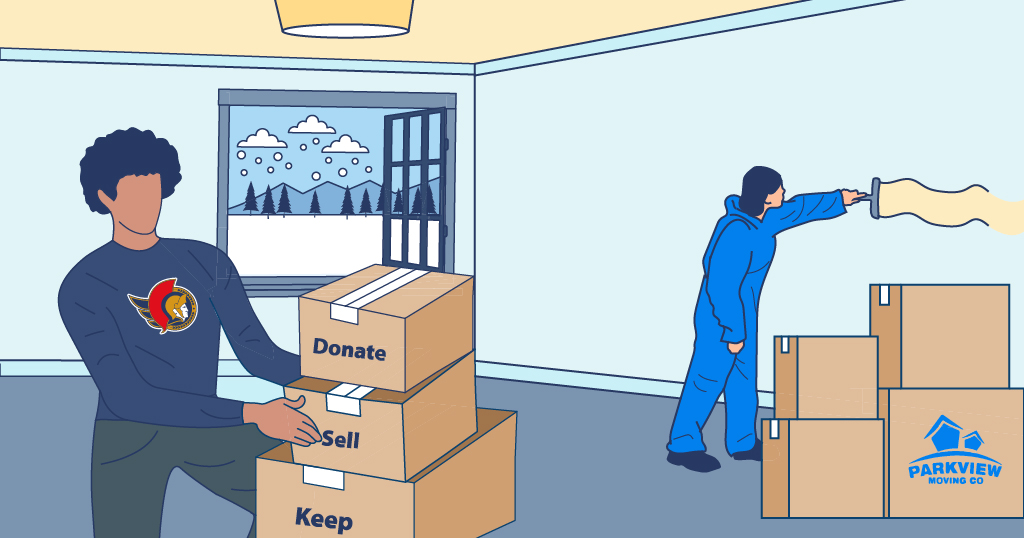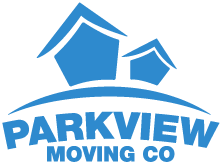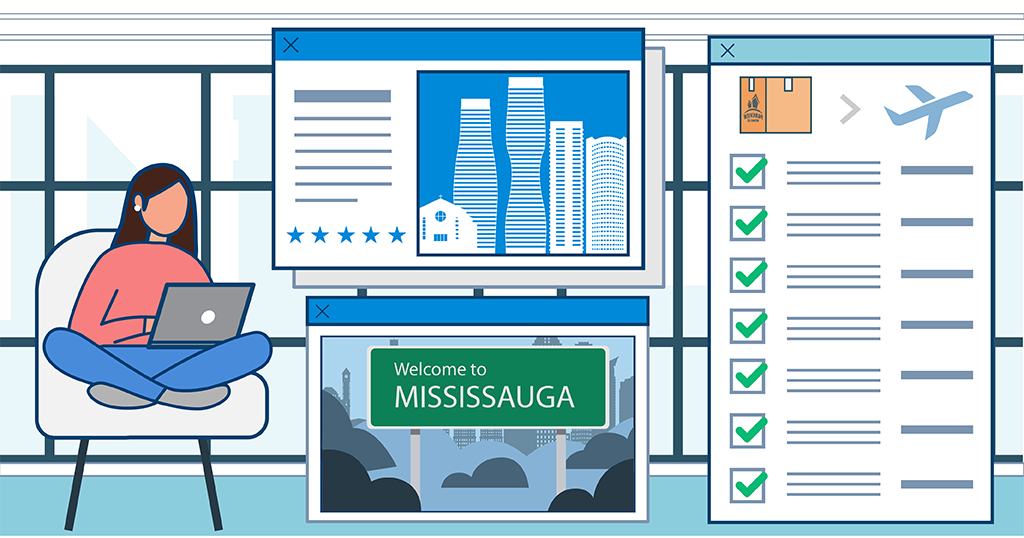
Winter moving prep is essential for a stress-free spring or summer move. Winter moving preparation ensures you have ample time to plan every step carefully. Planning ahead during the colder months helps you avoid last-minute scrambling and ensures everything is ready when moving day arrives. By decluttering, budgeting, and booking movers early, you can set yourself up for a seamless transition. Here’s a comprehensive guide to making the most of winter for your upcoming move.
1. Winter Decluttering and Downsizing Tips
Winter moving prep helps you start fresh by decluttering unnecessary items before your big move.
Winter is the perfect time to assess what you truly need. Moving fewer items saves both time and money, and it’ll make your new home feel organized from day one.
- Sort by category: Go room by room and divide your belongings into “keep,” “donate,” “sell,” and “discard” piles.
- Donate unused items: Gently used clothes, furniture, and household items can be donated to local charities.
- Sell valuable items: Platforms like Facebook Marketplace, Kijiji, or a good old-fashioned garage sale (when the weather allows) can help you earn extra cash before your move.
2. Budgeting for Your Winter Move
Moving can be expensive, so winter is an ideal time to get your finances in order. A clear budget will help you stay on track and avoid unexpected costs later.
- Factor in all costs: Include moving services, packing supplies, temporary storage, and transportation fees.
- Get quotes early: Contact your preferred moving company for estimates well in advance – especially if you’re booking for the busy spring or summer season.
- Plan for hidden expenses: Account for things like cleaning services, repairs, or utility transfers in your budget.
3. Choosing the Right Winter Moving Company
Winter moving prep includes researching and booking a reliable moving company to avoid last-minute stress.
The best moving companies book up quickly for spring and summer, so don’t wait until the last minute to start looking.
- Read reviews: Look for companies with excellent customer feedback and a track record of reliable service.
- Ask the right questions: Are they insured? Do they handle specialized items like pianos?
- Book early: Secure your preferred moving date well in advance to avoid scheduling conflicts.
4. Packing Non-Essentials for a Winter Move
Even if you’re months away from moving, there are likely things you don’t use daily that can be packed now.
- Seasonal items: Pack up holiday decorations, out-of-season clothing, and sports gear.
- Rarely used kitchenware: Extra dishes, appliances, and glassware can be boxed ahead of time.
- Label everything: Clearly mark your boxes with their contents and the room they belong in to save time when unpacking.
5. Home Maintenance Before Moving
Winter moving prep ensures that your home is in top condition before the big move, reducing potential delays.
Before the chaos of moving begins, tackle any home improvement tasks needed to get your current home ready to sell or hand over to a new tenant.
- Fix minor repairs: Take care of small issues like leaky faucets, chipped paint, or squeaky doors.
- Deep clean your home: A clean space makes packing easier and could even help you sell your home faster if you’re putting it on the market.
- Organize important documents: Keep moving contracts, lease agreements, and insurance information in a designated folder for easy access.
6. Winter Moving Day Logistics
The more planning you do now, the smoother your moving day will be.
- Reserve parking spaces: If you’re moving into a busy neighborhood, inquire about parking permits or loading zones in advance.
- Plan your route: For long-distance moves, plan out your travel schedule, including rest stops or overnight stays if needed.
- Update your address: Notify banks, subscriptions, and government services of your new address ahead of time.
7. First-Night Essentials for a Winter Move
Winter moving prep should also focus on preparing a first-night essentials box to keep necessities easily accessible.
Winter prep is also the perfect time to start thinking about your first night in your new home.
Pack a box with essentials, including:
- Toiletries (toothbrush, soap, etc.)
- A change of clothes
- Bedding and towels
- Phone chargers
- Snacks and basic kitchen supplies
This way, you won’t have to dig through multiple boxes after a long day of moving.
8. Storage Solutions
Winter moving prep can also involve considering storage solutions for excess belongings.
If your moving schedule doesn’t perfectly align with your new home’s availability, temporary storage could be the solution.
- Short-term storage: Great for gaps between closing dates or lease agreements.
- Long-term storage: Ideal if you’re downsizing and need extra space for belongings you’re not ready to part with.
Parkview Moving offers flexible storage solutions tailored to your needs.
9. Preparing for Winter Weather Challenges
Winter moving prep means anticipating weather-related challenges and preparing accordingly.
Unexpected weather can still be a factor, so it’s important to plan accordingly.
- Protect your belongings: Use waterproof bins or heavy-duty plastic covers for sensitive items.
- Monitor weather forecasts: If spring brings rain or late snow, having protective gear and equipment on hand will help avoid delays.
10. Staying Organized with a Winter Moving Checklist
Winter moving prep plays a crucial role in ensuring a well-organized transition to your new home.
A thorough checklist will keep you on track and help you manage each phase of the move effectively. Break it down by month to avoid feeling overwhelmed as moving day approaches.
- 3 months before: Book movers, declutter, and create a moving budget.
- 2 months before: Start packing non-essentials, schedule storage, and handle repairs.
- 1 month before: Confirm moving details, update your address, and finalize utilities.






